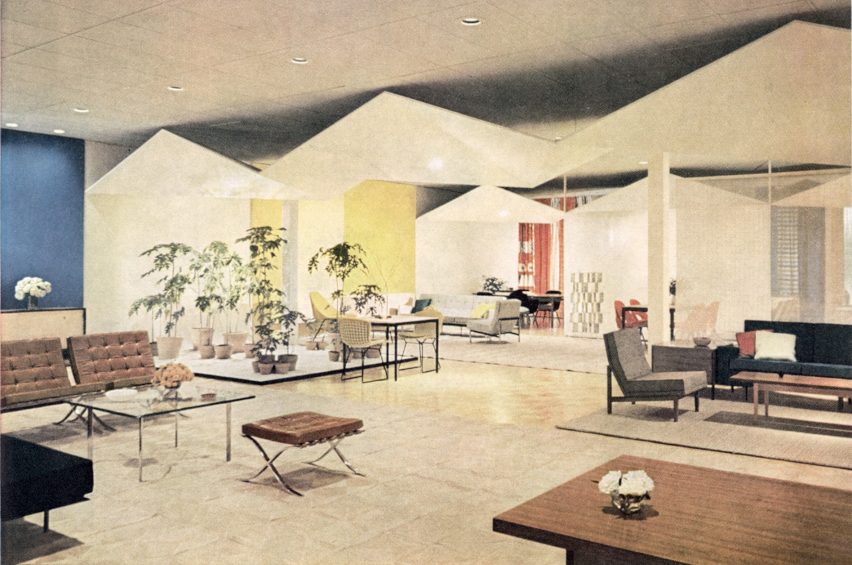Florence Knoll Bassett, the designer who pioneered the modern open-plan office, has passed away.
As the driving force behind the development of the Knoll furniture brand, and the founder of the company's ground-breaking Planning Unit, Knoll Bassett is considered one of the most influential figures in 20th-century design.
She developed many of the company's design classics, and also commissioned iconic pieces from figures like Eero Saarinen, Harry Bertoia and Isamu Noguchi.
She died on 25 January aged 101, it was announced by Knoll's senior vice-president of communications David E Bright.
"A brilliant design force"
American architecture critic Paul Goldberger is among those who have paid tribute to Knoll Bassett on Twitter, describing her as "a brilliant design force".
"We have lost one of the great design forces of the 20th century," he said. "Florence Knoll Bassett may have done more than anyone else to create what we think of as the 'Mad Men' design of the midcentury modern workspace."
Fellow critic Alexandra Lange called her "designer of the perfect sofa, talent picker, office queen".
Taught by Mies van der Rohe, Aalto and Gropius
Born Florence Margaret Schust, she was an orphan from the age of 12.
Studying at the Kingswood School for Girls in Michigan, she came under the radar of Finnish architect Eliel Saarinen, who designed the building. This was the start of a lifelong relationship with the Saarinen family, including Eliel's son Eero, who she would later commission furniture from. It led her to study architecture at the Cranbrook Academy of Art, where Saarinen was headteacher and Alvar Aalto was an influential figure.
The young Knoll Bassett also studied at the Massachusetts Institute of Technology, where Marcel Breuer and Walter Gropius were teachers, and the Architectural Association in London, before completing her training at what is now the Illinois Institute of Technology, under the steer of Ludwig Mies van der Rohe.
Knoll brought European design to USA
After graduating, Knoll Bassett moved to New York City with the intention of practicing architecture, but after marrying Hans Knoll – heir to a Stuttgart-based furniture company – the pair instead ended up working together to bring the European design aesthetic to the USA.
As Knoll Associates, they together brought some of the best-known designs of the century to market, from Mies van der Rohe's Barcelona Chair to Eero Saarinen's Tulip chairs and tables.
Knoll Bassett also designed several pieces of furniture herself, from her simple coffee table to her lounge sofa range. Although she described them as the "meat and potatoes" of the brand, compared with the more sculptural work of star designers, they are still revered today.
Knoll's Planning Unit defined the modern office
Not content with furnishing offices, Knoll Bassett established the Knoll Planning Unit in 1946, giving the company an interior-design arm.
Here, she defined the template for the now ubiquitous modern, open-plan office.
With a vision for "total design", she championed open workspaces, with meeting areas defined by groups of furniture rather than walls.
She also launched the company's textile department.
AIA Gold Medal and National Medal of Arts
After the sudden death of her husband in 1955, Knoll Bassett became the sole director of the company. She served as president until 1959, when she sold the company, but stayed on as design director until 1965.
She remarried in 1957 and added the name of her second husband, Harry Hood Bassett, to her own.
She became the first women to receive the Gold Medal for Industrial Design from the American Institute of Architects in 1961, while in 2003 she was presented with the National Medal of Arts.
A seminal exhibition of her work, titled Florence Knoll Bassett: Defining Modern, was shown at the Philadelphia Museum of Art in 2004.
Today, Knoll remains one of the world's biggest and most important furniture brands, working with architects and designers including David Adjaye and Barber and Osgerby.

